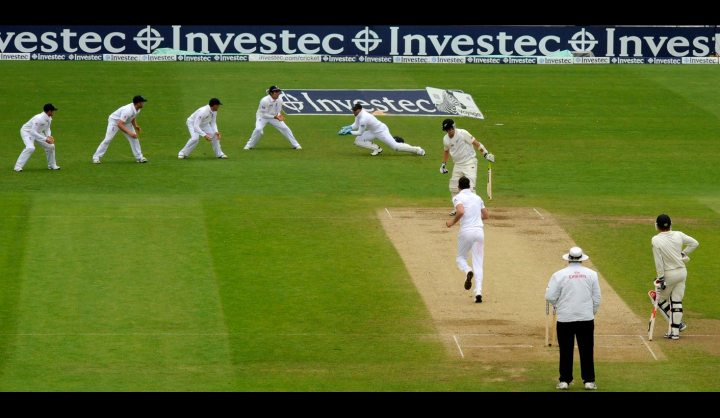Sport
Test Championship: Not a pinnacle global event

The ICC have confirmed that there will be a Test Championship in 2013. Away goes the Champions Trophy and in comes an event that will only involve four teams and three games. A quaint notion in its essence, but it’s actually an injustice to all those who participate in the sport. BY ANTOINETTE MULLER.
Much to the delight of Test cricket purists all over the world, the ICC have confirmed that the inaugural Test Championship will take place in 2017. Despite speculation that the Champions Trophy will stay on, the sport’s governing body announced over the weekend that it will be no more.
The Test Championship was originally scheduled for 2013. Those Test cricket lovers who turn up their noses at the shorter format of the game can now not only get on their high horses, but they can ride those horses to their ivory towers.
The format of what is obtusely being called a “World Test Championship” won’t really be representative of the world at all. The Championship will contain just four teams with just three matches to be played. Two semi-finals and one final – with teams being made up of those sides ranked one to four in the ICC’s rankings by the end of December 2016.
The time leading up to that will be seen as a “qualification period” with the Tests being played serving as what, in football, would be known as playoffs. Only, in football, all sides are equal in how many playoffs they’re handed. Not so in cricket.
In the qualification period, England and Australia will play close to 40 Test matches each. Fifteen of those Tests are between each other. India will play 28, New Zealand 31, Pakistan 26, world-number one South Africa a paltry 22, Sri Lanka 24 and West Indies 28. The oft-forgotten Zimbabwe and Bangladesh will play just 16 Tests each. That might change, depending on the frivolous need to swap the Test whites for coloured clothing, in favour of generating profit. But at face value, it’s a good overview of how the schedule looks.
One doesn’t need much logic to see that the qualification period is unjustly skewed. The argument will exist that Bangladesh and Zimbabwe won’t make it into the top four rankings anyway, but that is beside the point. If the Test championship wants to market itself as the pinnacle of the longest format of the game, surely all sides should be given equal opportunity on the playing field?
If a tournament is being marketed as a “pinnacle global event”, then it should provide equal chances for global sides to stake their claim. If not, don’t call it as such and suggest alternatives. A promotion-relegation structure for Test cricket has been touted before, but the counter argument is that it will just skew the rankings even more and those teams who land in the bottom tier could be forgotten about. The point remains the same: there is a massively unfair discrepancy in the scheduling – and it’s not even just geared towards the smaller teams.
The Future Tours Programme (FTP) which details and determines who plays whom and when is decided years in advance and that’s perhaps where the problem lies. When the current FTP was released, South Africa weren’t at the top of their game, New Zealand weren’t looking resurgent, Zimbabwe had just started playing Test cricket again and Australia weren’t quite so horrendous.
Planning schedules so far ahead creates an issue for many reasons. But, no matter when it’s done, it will always seemingly ostracise someone. Favours from one board to another, agreements here and there and optimising profit all play a role. Who really wants to tour Bangladesh for a five-Test series when Australia and England can play each other 15 times instead? Cricket is elitist and primed for benefiting those who can bring a profit.
It’s a rather quaint notion from the ICC to try to hammer home just how much they care about Tests. They have even implemented a “minimum requirement of 16 Tests in a four-year period or else”, but that masquerading of concern for the well-being of the longest form of the game is misplaced. Certain teams are still very much suckling on the hind teat of progress and the ICC is doing little to help grow the game. Test cricket does have a future; of that there is no doubt. It has a future in many countries and it will always remain the ultimate test for players, no matter how hard other formats of the game might try.
Breakaway leagues and foreign currency temptation is nothing new, but cricket has survived it all before and can do so again. What is far more concerning than Test cricket’s wellbeing overall is how it is being curated in both the smaller countries and affiliate nations. There seems to be little regard for the game if the nation involved in it can’t turn a profit. Cricket has become a commodity and, to an extent, that’s fine. But then the powers that be should at least be honest about it instead of feigning concern for publicity. DM
Photo: England’s Matt Prior (5th L) catches New Zealand’s Trent Boult as England wins the second test cricket match at Headingley cricket ground in Leeds, England May 28, 2013. REUTERS/Philip Brown




















 Become an Insider
Become an Insider